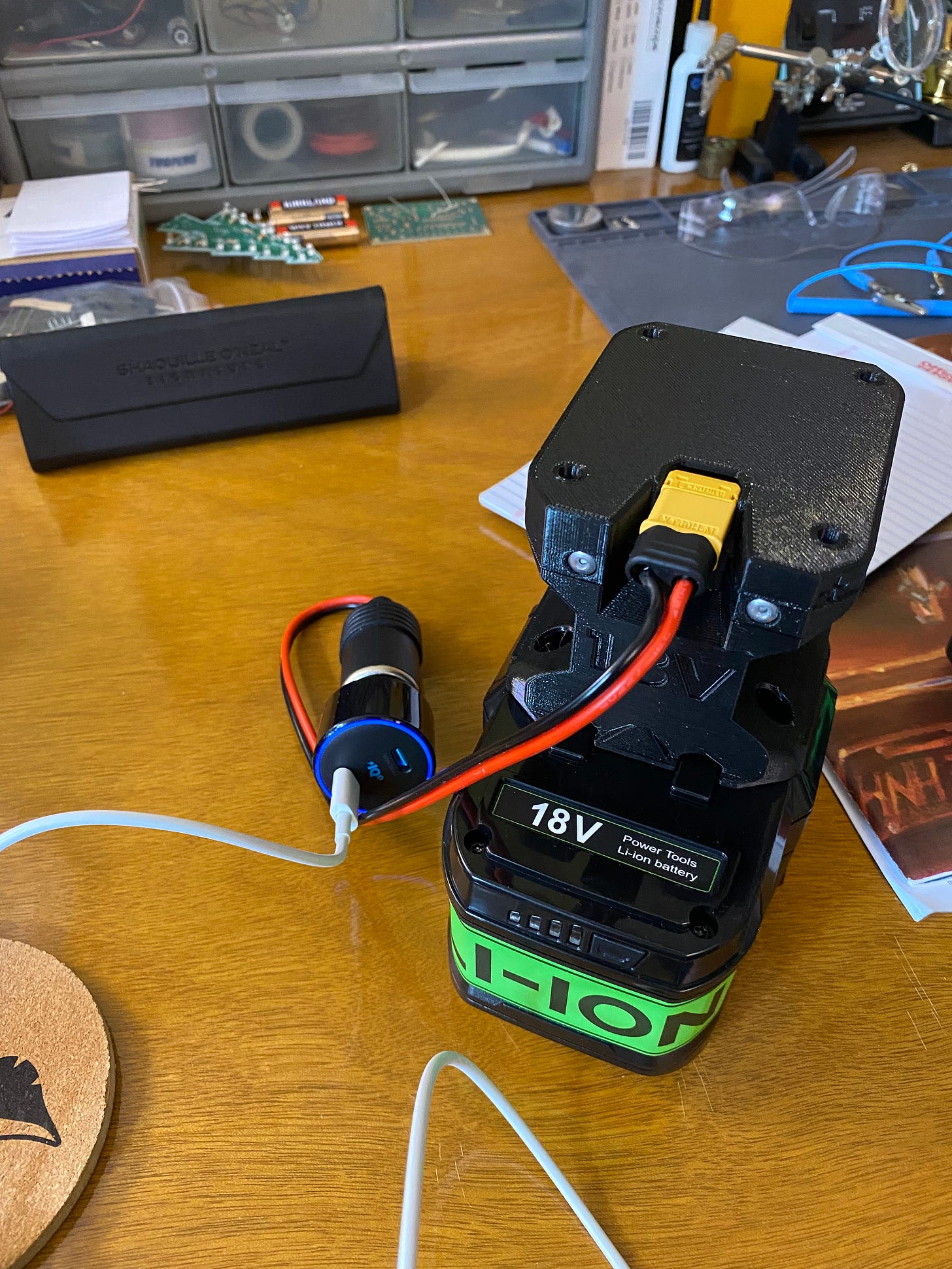Home Energy Storage: The Next Generation
Some things have changed!
In Part 1 of this series, I talked about how I adapted a Sealed Lead Acid battery for use as a home energy reservoir. In Part 2, I talked about trying to convert voltage levels (and how I burned out my laptop). Today I’ll close this trilogy by explaining my most recent variation.
I’m a big fan of e-bikes. Atlanta is a city of hills and humidity, so having an electric motor to get me moving enabled me to commute to work by bike for many years. (I remain convinced that one of the best mass transit improvements the City of Atlanta could make is to build more bike and pedestrian infrastructure and subsidize e-bike rental services for residents.)
Anyway, I was an early e-bike adopter, and bought a 2010 version of this conversion kit that was based around a 24V, 250W motor and a sealed lead acid battery pack. It works well, but I find it hard to remove and reinstall the battery for charging - and also, it’s very heavy. Now that the battery is twelve years old and not performing as well, I started to wonder whether I might be able to upgrade to a Lithium-Ion equivalent.
I was also thinking about the Ryobi ONE+ tools we’ve accumulated at home - we started with a string trimmer, but eventually added a blower, chainsaw, and fan and a collection of batteries. We regularly use the Ryobi blower instead of our more powerful plug-in Toro blower just because it’s so much more accessible and maneuverable when not needing an extension cord. It would be very convenient to find a way to power my bike from a Ryobi battery pack. (I haven’t done this yet - but when I do, I’ll write about it here.)
Along the way, I got thinking about the weaknesses in my Lead Acid Energy Reservoir - especially how long it took to fully charge (about 12 hours). It occurred to me that a good place to start would be to adapt a Ryobi pack to augment my existing 12V setup.
This was substantially easier than I expected. Not only are there several other projects that adapt Ryobi batteries into bench power supplies, Ryobi even sells an official "inverter generator".
I found a 3D-printed adapter that would allow me to connect devices to a Ryobi pack using an XT60 battery connector. I also bought a 12 Volt Regulator to drop the voltage from “Ryobi Voltage” to “Car Voltage”; I also bought a car receptacle, and car USB-C adapter, connected everything together, and it worked great.
I also discovered a fun optimization opportunity. Many modern electronics use switched-mode power supplies to convert between voltages - not only are they typically more efficient, but they allow devices to work stably across a wide range of input voltages. So when I noticed that my USB-C car adapter was rated for 12V and 24V systems, I decided to take a chance on directly connecting the car adapter to the battery without the 12V regulator.1 And it worked great!
I’ve now used this a few times to work from public parks and other places without reliable access to power outlets. I’d assumed the biggest advantage would be the ability to change batteries so that I could drain one while another is charging - but the chargers work so quickly that I’ve been able to fully recharge my 72 Wh batteries in about an hour. I also found that there are bunches of off-brand, high capacity, Ryobi compatible batteries available, each of which has ~1/4 the energy capacity of my heavy Lead Acid setup, and more than enough energy to fully recharge my laptop.
A poem about coffee
I always knew that I would rue
the day that I forgot to brew
the black extract of coffee beans
that helps me cope with MS Teams
Today I rose up from my bed
and poured a cup to clear my head
and start to feel, uncannily,
it is the cup that drinketh me.
I’m going to pick up working on my videoconference series next, so watch for another post on that before the end of the month.
It’s exactly the same sort of reckless assumption that led to me burning out my laptop in Part 2 - but the USB-C adapter was much cheaper than the laptop and seemed much more likely to work. And it did!

